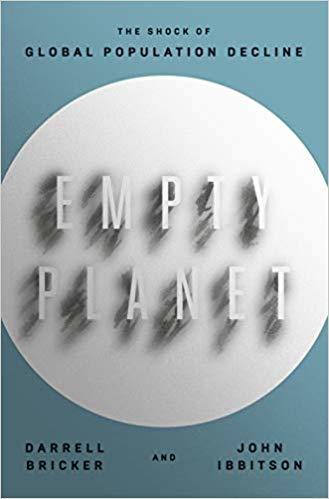What do you think?
Rate this book


304 pages, Hardcover
First published February 5, 2019
Throughout my childhood, I've heard time and time again about the rise and fall of human population.
Population decline isn't a good thing or a bad thing. But it is a big thing.
The human herd has been culled in the past by famine or plague. This time, we are culling ourselves...And what has changed so much that the human population is decreasing at such an alarming rate?
Urbanization, improved public health, increasing affluence and, above all, increasing autonomy for women had resulted in fewer babies per woman in each generation.With an emphasis on women's rights. The authors' research showed that there is a direct correlation between education and children.
And as woman won more rights and greater power, they stopped having so many children. After all, babies are not always good news for women.And this is a global phenomenon - from the U.S. to Europe to Africa - once the women have access to education and birth control, then the country's population begins to decline.
...in countries with a below-replacement fertility rate - which is pretty much every country in the developed world - economic migrants are essential to counteract the impact of population decline.And they are quick to point out that this solution isn't the most popular one:
A dark thread of racist, nativist, populist intolerance flows through the American story. The latest immigrants are not like us...They will never assimilate...They're a threat.And yet, Canada has seen a population and economy boom since adopting immigration-friendly policies.
Canada welcomed the whole world, but with the stipulation that new arrivals had to have skills and education needed to find work quickly...Can the negative effects be postponed? Only time will tell...
Great-grandparents - 9-11 children (started having children immediately, ~18-19)In less than half a century, the number of children in my family declined over 75%. The same happened with my husband's family, my friends, coworkers.
Grandparents - 5 children (started having children mid-twenties)
Parents - 2 children (started having children early thirties)
Our future will contain something we have never experienced: a world growing smaller in numbers by choice.With thanks to the publishing company for a free copy in exchange for an honest review.
Back in the 1960s and 70s many people feared overpopulation, and for good reasons. Human population was rising. Serious research, most notably The Limits To Growth (1972; based on a powerful computer simulation), suggested crises to come, ranging from overcrowding to starvation. Science fiction and popular culture echoed this with novels like Stand on Zanzibar (John Brunner, 1968), books like The Population Bomb (1968), and movies like Soylent Green (1973) and Z.P.G. (1972).

(I remember clearly reading the liner notes for a piece of electronic-ish music around 1975. I was about eight, and the album cover back described music for an overpopulated future, when the earth was covered by giant buildings, packed tightly with far, far too many humans. I wish that memory was clear enough to include a title or composer.)Readers will have noticed that we did not arrive in such an overcrowded future, despite the deplorable appearance of a drink called Soylent. That's because, in part, we were terrified of such a scenario, and responded by altering our behaviors.
In the rest of the developed world, principally the United States and Canada, immigration will become the sole driver of population growth starting sometime in the 2020s. (151)In response, some nations may try to encourage more reproduction. Bricker and Ibbitson are skeptical about the efficacy of such moves (examples from Sweden, Singapore), finding them expensive, politically fragile, and accomplishing little (72).